The World Wide Web
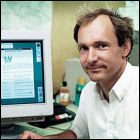 The World Wide Web is born as Tim Berners-Lee shows off his concept for implementing hypertext, consisting of cross-linked documents, on the internet. At the time of his demonstration, the net’s primary functions are Gopher, Telnet and Usenet, but as those services do not provide a simple, user-friendly experience for providing amusingly captioned cat pictures to the public, “the web”, also known as “the WWW”, quickly gains traction and prominence. While the internet’s infrastructure can trace its origins to the 1960s and ARPAnet, this marks the dawn of the public-facing internet (which now, of course, includes the site you are reading right now).
The World Wide Web is born as Tim Berners-Lee shows off his concept for implementing hypertext, consisting of cross-linked documents, on the internet. At the time of his demonstration, the net’s primary functions are Gopher, Telnet and Usenet, but as those services do not provide a simple, user-friendly experience for providing amusingly captioned cat pictures to the public, “the web”, also known as “the WWW”, quickly gains traction and prominence. While the internet’s infrastructure can trace its origins to the 1960s and ARPAnet, this marks the dawn of the public-facing internet (which now, of course, includes the site you are reading right now).
Exporting the Compact Disc
 For the first time, Compact Disc players and pre-recorded CDs appear in the English-speaking world (having been available in Japan since late 1982. The first label to embrace the new digital format is CBS Records, which publishes 16 existing titles on CD ranging from classical to rock. The technology has been developed jointly by Philips and Sony since the 1970s.
For the first time, Compact Disc players and pre-recorded CDs appear in the English-speaking world (having been available in Japan since late 1982. The first label to embrace the new digital format is CBS Records, which publishes 16 existing titles on CD ranging from classical to rock. The technology has been developed jointly by Philips and Sony since the 1970s.
The Compact Disc
 Following five years of research and development, Netherlands-based Philips Electronics demonstrates one of the earliest iterations of the compact audio disc, an optical disc in the now-familiar five-inch size which can be read by a CD player with a laser diode. Philips and Sony, who have been developing the new medium in parallel, will later join forces and create a standard for audio compact discs in 1980, introducing the CD as a consumer product in the early 1980s despite resistance from record companies with a vested interest in vinyl LPs (and only a begrudging acceptance of audio cassettes). In addition to higher audio fidelity and a more durable medium (an optical disc encased in a plastic shell, protecting the physical surface that is so often damaged with vinyl), the CD and its player can also compensate for any damage suffered by the disc through error correction.
Following five years of research and development, Netherlands-based Philips Electronics demonstrates one of the earliest iterations of the compact audio disc, an optical disc in the now-familiar five-inch size which can be read by a CD player with a laser diode. Philips and Sony, who have been developing the new medium in parallel, will later join forces and create a standard for audio compact discs in 1980, introducing the CD as a consumer product in the early 1980s despite resistance from record companies with a vested interest in vinyl LPs (and only a begrudging acceptance of audio cassettes). In addition to higher audio fidelity and a more durable medium (an optical disc encased in a plastic shell, protecting the physical surface that is so often damaged with vinyl), the CD and its player can also compensate for any damage suffered by the disc through error correction.
NAVSTAR-1
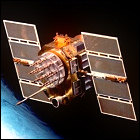 The U.S. Air Force launches NAVSTAR-1, the first of a planned constellation of experimental satellites supporting the Department of Defense’s Global Positioning System project. Envisioned as a network of satellites providing extremely accurate location data for military purposes, the Global Positioning System will later grow to service civilian customers as well. Three other NAVSTAR satellites are launched in 1978 alone, and later satellites in the original NAVSTAR series will be launched betwen 1980 and 1985. Unlike the later, more advanced NAVSTAR II satellites of the 1990s, data from the original NAVSTAR constellation is restricted to the American military.
The U.S. Air Force launches NAVSTAR-1, the first of a planned constellation of experimental satellites supporting the Department of Defense’s Global Positioning System project. Envisioned as a network of satellites providing extremely accurate location data for military purposes, the Global Positioning System will later grow to service civilian customers as well. Three other NAVSTAR satellites are launched in 1978 alone, and later satellites in the original NAVSTAR series will be launched betwen 1980 and 1985. Unlike the later, more advanced NAVSTAR II satellites of the 1990s, data from the original NAVSTAR constellation is restricted to the American military.
You’re listening to Earth FM
 The first transmission from Earth designed to be a message for interstellar listeners is broadcast from the newly-refurbished Arecibo Radio Telescope in Puerto Rico. Weighing in at 210 bytes, the message is a binary transmission that, when properly assembled, provides a graphical representation of Earth’s solar system, a human being, the makeup of human DNA and the elements from which it is constructed, and the population of Earth. Though the Arecibo dish is pointed in the direction of the M13 globular cluster at the time of the message’s transmission, that cluster will have moved in the 25,000 years it takes for the message to reach that location (and, in any case, Earth and its entire solar system will have moved in the 25,000 additional years it would take to receive a reply), so the message is more of an interstellar technology demo than a message in a bottle.
The first transmission from Earth designed to be a message for interstellar listeners is broadcast from the newly-refurbished Arecibo Radio Telescope in Puerto Rico. Weighing in at 210 bytes, the message is a binary transmission that, when properly assembled, provides a graphical representation of Earth’s solar system, a human being, the makeup of human DNA and the elements from which it is constructed, and the population of Earth. Though the Arecibo dish is pointed in the direction of the M13 globular cluster at the time of the message’s transmission, that cluster will have moved in the 25,000 years it takes for the message to reach that location (and, in any case, Earth and its entire solar system will have moved in the 25,000 additional years it would take to receive a reply), so the message is more of an interstellar technology demo than a message in a bottle.
Our World: we now go live to…
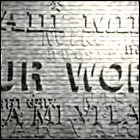 An international production caried out live via satellite on a scale previously unimagined, Our World chronicles the activities of several countries in an all-star, real time TV broadcast to 26 countries, with segments aired live from Canada, the United States, Britain, Japan and Australia – the producers, based at the BBC, forbid pre-taped segments. Celebrity guests taking part in the live broadcast include painter Pablo Picasso, Marshall McLuhan, and the Beatles (performing “All You Need Is Love”); events seen happening live include the construction of a Saturn V rocket at Kennedy Space Center and the construction of the Japanese subway system. As laid out in the planning documents for the broadcast, which took nearly a year to prepare for, no heads of state or political figures are permitted to appear; the Soviet Union, East Germany, Czechoslovakia, Hungary and Poland abruptly end their participation just four days before the airdate, protesting the west’s stance on the Six Day War in the Middle East. An estimated 400 million people watch worldwide – the largest audience of any single television broadcast to date.
An international production caried out live via satellite on a scale previously unimagined, Our World chronicles the activities of several countries in an all-star, real time TV broadcast to 26 countries, with segments aired live from Canada, the United States, Britain, Japan and Australia – the producers, based at the BBC, forbid pre-taped segments. Celebrity guests taking part in the live broadcast include painter Pablo Picasso, Marshall McLuhan, and the Beatles (performing “All You Need Is Love”); events seen happening live include the construction of a Saturn V rocket at Kennedy Space Center and the construction of the Japanese subway system. As laid out in the planning documents for the broadcast, which took nearly a year to prepare for, no heads of state or political figures are permitted to appear; the Soviet Union, East Germany, Czechoslovakia, Hungary and Poland abruptly end their participation just four days before the airdate, protesting the west’s stance on the Six Day War in the Middle East. An estimated 400 million people watch worldwide – the largest audience of any single television broadcast to date.
ATS-1
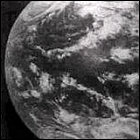 NASA launches Aplications Technology Satellite-1, the first of a new series of experimental satellites with a goal of combining the functions of existing weather and communication satellites, with other technology demonstrations added on. ATS-1 transmits the first-ever view of the entire face of Earth visible from geosynchronous orbit, as well as testing some of the first satellite navigation technology. ATS-1’s position in orbit also proves ideal for the North-America-to-Australia link during 1967’s global Our World broadcast. ATS-1 remains in serice for almost exactly 12 years.
NASA launches Aplications Technology Satellite-1, the first of a new series of experimental satellites with a goal of combining the functions of existing weather and communication satellites, with other technology demonstrations added on. ATS-1 transmits the first-ever view of the entire face of Earth visible from geosynchronous orbit, as well as testing some of the first satellite navigation technology. ATS-1’s position in orbit also proves ideal for the North-America-to-Australia link during 1967’s global Our World broadcast. ATS-1 remains in serice for almost exactly 12 years.
Intelsat I: The Early Bird
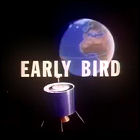 Built for COMSAT (Communications Satellite Corporation) by Hughes Aircraft, borrowing heavily from the design of the successful Syncom experimental satellites earlier in the decade, Intelsat I is launched into a geosynchronous orbit over the Atlantic Ocean, providing telephone, TV, and fax communication via satellite between the United States and Europe. Intelsat I, nicknamed “Early Bird”, doesn’t go operational until COMSAT has completed diagnostics and engineering tests; its first operational use is in June 1965. It will provide satellite transmission of the first live TV coverage of a returning space mission (the splashdown of Gemini 6 in December 1965), and it will be an integral part of the international satellite links necessary for the Our World broadcast in 1967. Despite being retired from regular use in January 1969, it will be reactivated in June 1969 to handle some of the television coverage of the first lunar landing.
Built for COMSAT (Communications Satellite Corporation) by Hughes Aircraft, borrowing heavily from the design of the successful Syncom experimental satellites earlier in the decade, Intelsat I is launched into a geosynchronous orbit over the Atlantic Ocean, providing telephone, TV, and fax communication via satellite between the United States and Europe. Intelsat I, nicknamed “Early Bird”, doesn’t go operational until COMSAT has completed diagnostics and engineering tests; its first operational use is in June 1965. It will provide satellite transmission of the first live TV coverage of a returning space mission (the splashdown of Gemini 6 in December 1965), and it will be an integral part of the international satellite links necessary for the Our World broadcast in 1967. Despite being retired from regular use in January 1969, it will be reactivated in June 1969 to handle some of the television coverage of the first lunar landing.
Syncom 3
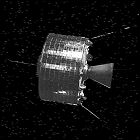 NASA launches the experimental, Hughes Aircraft-built communications satellite Syncom 3 into a geostationary orbit, the first human-made satellite to occupy that orbit. Much like Syncom 2, Syncom 3 is capable of handling two-way telephone calls, as well as teletype and fax transmissions. Placed in an orbit roughly over the International Date Line, Syncom 3 is instrumental in providing live TV coverage of the 1964 Summer Olympics from Tokyo to American television audiences, and the satellite’s technology is considerably upgraded compared to that of Syncom 2 in order to handle television transmission. Control of Syncom 2 is handed over to the Department of Defense in 1965 once NASA has completed its run of experimental communications tests.
NASA launches the experimental, Hughes Aircraft-built communications satellite Syncom 3 into a geostationary orbit, the first human-made satellite to occupy that orbit. Much like Syncom 2, Syncom 3 is capable of handling two-way telephone calls, as well as teletype and fax transmissions. Placed in an orbit roughly over the International Date Line, Syncom 3 is instrumental in providing live TV coverage of the 1964 Summer Olympics from Tokyo to American television audiences, and the satellite’s technology is considerably upgraded compared to that of Syncom 2 in order to handle television transmission. Control of Syncom 2 is handed over to the Department of Defense in 1965 once NASA has completed its run of experimental communications tests.
Channel 37: all radio astronomy, all the time
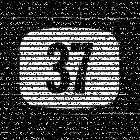 The United States Federal Communications Commission places a ten-year hold on television station licenses for UHF channel 37. Channel 37’s bandwidth, in the 608-614 megahertz range, is vital to the burgeoning science of radio astronomy. The FCC immediately sets about reallocating channels on the UHF dial for 18 television stations across America, which had previously been allocated channel 37 on their licenses. One month later, the ban on broadcasting in that part of the spectrum is made global; no television station in the United States, Mexico, Canada, and several other countries will ever occupy those frequencies. When the ban comes up for review again in 1974, it will be made permanent, though a petition from radio astronomers to set aside channel 36 at that time will be denied.
The United States Federal Communications Commission places a ten-year hold on television station licenses for UHF channel 37. Channel 37’s bandwidth, in the 608-614 megahertz range, is vital to the burgeoning science of radio astronomy. The FCC immediately sets about reallocating channels on the UHF dial for 18 television stations across America, which had previously been allocated channel 37 on their licenses. One month later, the ban on broadcasting in that part of the spectrum is made global; no television station in the United States, Mexico, Canada, and several other countries will ever occupy those frequencies. When the ban comes up for review again in 1974, it will be made permanent, though a petition from radio astronomers to set aside channel 36 at that time will be denied.
Syncom 2
 NASA launches the experimental, Hughes Aircraft-built communications satellite Syncom 2 into a geosynchronous orbit, the first human-made satellite to occupy that orbit. (Syncom 1, launched in February, malfunctioned on its way to that orbit, so technically it could be considered the first, though it didn’t arrive in geosynchronous orbit in a functional state.) Capable of handling either a single two-way telephone call, or up to 16 simultaneous teletype transmissions. Early fax transmission tests were also carried out. Syncom 2 could also transmit low-quality video, but with no audio. Control of Syncom 2 is handed over to the Department of Defense in 1965 once NASA has completed its run of experimental communications tests.
NASA launches the experimental, Hughes Aircraft-built communications satellite Syncom 2 into a geosynchronous orbit, the first human-made satellite to occupy that orbit. (Syncom 1, launched in February, malfunctioned on its way to that orbit, so technically it could be considered the first, though it didn’t arrive in geosynchronous orbit in a functional state.) Capable of handling either a single two-way telephone call, or up to 16 simultaneous teletype transmissions. Early fax transmission tests were also carried out. Syncom 2 could also transmit low-quality video, but with no audio. Control of Syncom 2 is handed over to the Department of Defense in 1965 once NASA has completed its run of experimental communications tests.
Relay 1
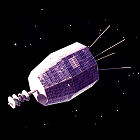 NASA launches the experimental, RCA-built Relay 1 communications satellite. This is the first satellite to relay television signals from the United States to Japan, including the first word of the assassination of President Kennedy in 1963. In 1964, it’s part of the link bringing television coverage of the 1964 Summer Olympics from Tokyo to the U.S., participating in the first multi-satellite broadcast with Syncom 3. This technological first doesn’t come without some problems, however, and Relay 1 ceases to be operational in early 1965, but remains in orbit for decades.
NASA launches the experimental, RCA-built Relay 1 communications satellite. This is the first satellite to relay television signals from the United States to Japan, including the first word of the assassination of President Kennedy in 1963. In 1964, it’s part of the link bringing television coverage of the 1964 Summer Olympics from Tokyo to the U.S., participating in the first multi-satellite broadcast with Syncom 3. This technological first doesn’t come without some problems, however, and Relay 1 ceases to be operational in early 1965, but remains in orbit for decades.
The light-emitting diode
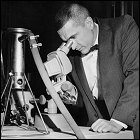 Working at General Electric’s New York R&D lab, scientist Nick Holonyak fires up the first working visible-spectrum light-emitting diode, producing a single small red light. (Texas Instruments had already created infrared LEDs the year before.) Too expensive to mass-produce initially, LEDs will become commonplace in calculators and other electronic devices in the 1970s, though more modern variants in the 1990s will lead to a revolution in lighting and display technology, resulting in flat-screen computer monitors and televisions and spinoff technology such as tablet computers and portable telephones with LED-based touchscreens – all unimaginable in 1962.
Working at General Electric’s New York R&D lab, scientist Nick Holonyak fires up the first working visible-spectrum light-emitting diode, producing a single small red light. (Texas Instruments had already created infrared LEDs the year before.) Too expensive to mass-produce initially, LEDs will become commonplace in calculators and other electronic devices in the 1970s, though more modern variants in the 1990s will lead to a revolution in lighting and display technology, resulting in flat-screen computer monitors and televisions and spinoff technology such as tablet computers and portable telephones with LED-based touchscreens – all unimaginable in 1962.
Telstar
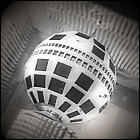 The first Telstar communications satellite is launched, the first attempt to forge a permanent trans-Atlantic telecommunications link with an satellite that both receives and actively retransmits signals. A multinational venture between communications companies and government agencies in America, England and France, Telstar relays the first live trans-Atlantic television broadcast, bringing together the three major American networks of the time and the BBC for a one-of-a-kind joint news broadcast. Live intercontinental telephone calls and other TV broadcasts are also handled by Telstar. Though it’s an experimental satellite, Tesltar is expected to remain in service for some time, but its operational life is reduced to less than a year by, among other things, the effects of high-altitude nuclear weapons tests. Telstar shuts down in February 1963, but remains in orbit to this day.
The first Telstar communications satellite is launched, the first attempt to forge a permanent trans-Atlantic telecommunications link with an satellite that both receives and actively retransmits signals. A multinational venture between communications companies and government agencies in America, England and France, Telstar relays the first live trans-Atlantic television broadcast, bringing together the three major American networks of the time and the BBC for a one-of-a-kind joint news broadcast. Live intercontinental telephone calls and other TV broadcasts are also handled by Telstar. Though it’s an experimental satellite, Tesltar is expected to remain in service for some time, but its operational life is reduced to less than a year by, among other things, the effects of high-altitude nuclear weapons tests. Telstar shuts down in February 1963, but remains in orbit to this day.
OSCAR-1
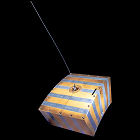 OSCAR-1, an experimental satellite designed and built by amateur radio engineers for a technology test, is launched as a secondary payload aboard an Air Force rocket whose primary payload is a reconnaissance satellite. This is the first launch in history with a secondary payload, and the first payload not developed by a specific government or its agencies. The amateur radio engineers of Project OSCAR built the simple transmitter satellite for a grand total of $35, with a finite battery life and no attitude control thrusters of any kind, to transmit the message “HI” in the 2-meter band until the battery expired (which happens a few weeks before the satellite re-enters Earth’s atmosphere in late January 1962). A nearly-identical OSCAR-2 satellite will be launched in June 1962, while OSCAR-3, launched in 1965, is capable of receiving and retransmitting signals.
OSCAR-1, an experimental satellite designed and built by amateur radio engineers for a technology test, is launched as a secondary payload aboard an Air Force rocket whose primary payload is a reconnaissance satellite. This is the first launch in history with a secondary payload, and the first payload not developed by a specific government or its agencies. The amateur radio engineers of Project OSCAR built the simple transmitter satellite for a grand total of $35, with a finite battery life and no attitude control thrusters of any kind, to transmit the message “HI” in the 2-meter band until the battery expired (which happens a few weeks before the satellite re-enters Earth’s atmosphere in late January 1962). A nearly-identical OSCAR-2 satellite will be launched in June 1962, while OSCAR-3, launched in 1965, is capable of receiving and retransmitting signals.
Courier 1B
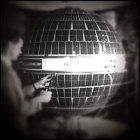 The U.S. Air Force launches the first active-relay communications satellite into orbit, Courier 1B (the original Courier 1 having been lost to a faulty launch vehicle earlier). Unlike the reflective Echo 1 satellite, Courier 1B uses power from the solar cells covering its spherical casing to reboost and retransmit the signals it receives from Earth. Once again, a message from President Eisenhower is transmitted, this time to be received by the United Nations. Clourier 1B remains functional for just over two weeks before a glitch renders it useless.
The U.S. Air Force launches the first active-relay communications satellite into orbit, Courier 1B (the original Courier 1 having been lost to a faulty launch vehicle earlier). Unlike the reflective Echo 1 satellite, Courier 1B uses power from the solar cells covering its spherical casing to reboost and retransmit the signals it receives from Earth. Once again, a message from President Eisenhower is transmitted, this time to be received by the United Nations. Clourier 1B remains functional for just over two weeks before a glitch renders it useless.
Echo 1
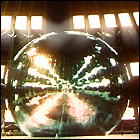 The experimental communications relay satellite Echo 1 is launched into orbit by NASA. A 100-foot metalized Mylar balloon, Echo 1 is a demonstration of passive signal relay, carrying no powered transmitters of its own; its reflective surface simply bounces signals back to Earth. Microwave signals, radio, telephone and TV signals are all successfully relayed via Echo 1; it remains in orbit for four months.
The experimental communications relay satellite Echo 1 is launched into orbit by NASA. A 100-foot metalized Mylar balloon, Echo 1 is a demonstration of passive signal relay, carrying no powered transmitters of its own; its reflective surface simply bounces signals back to Earth. Microwave signals, radio, telephone and TV signals are all successfully relayed via Echo 1; it remains in orbit for four months.
Videotape
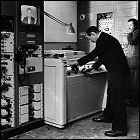 At the National Association of Broadcasters (NAB) convention in Chicago, Ampex demonstrates the first commercially-available videotape deck, the Ampex VRX-1000 Quad VTR, using two-inch-wide open-reel videotape, in spools with a 14-inch diameter, to record and play back up to an hour of television programming. Over the next four days, Ampex receives orders from broadcasters totaling over two million dollars. CBS will give the VRX-1000 its first national on-air use in November, tape-delaying a newscast to its stations on the west coast, allowing the first broadcast of a single program at the same hour in different time zones. NBC will also have the VRX-1000 in use at the beginning of 1957. A newer model capable of recording and playing back programming in full color will become available in 1958. Though it does not record at the same resolution as film, the relative ease of use of videotape will see it replace kinescope film in most TV operations.
At the National Association of Broadcasters (NAB) convention in Chicago, Ampex demonstrates the first commercially-available videotape deck, the Ampex VRX-1000 Quad VTR, using two-inch-wide open-reel videotape, in spools with a 14-inch diameter, to record and play back up to an hour of television programming. Over the next four days, Ampex receives orders from broadcasters totaling over two million dollars. CBS will give the VRX-1000 its first national on-air use in November, tape-delaying a newscast to its stations on the west coast, allowing the first broadcast of a single program at the same hour in different time zones. NBC will also have the VRX-1000 in use at the beginning of 1957. A newer model capable of recording and playing back programming in full color will become available in 1958. Though it does not record at the same resolution as film, the relative ease of use of videotape will see it replace kinescope film in most TV operations.